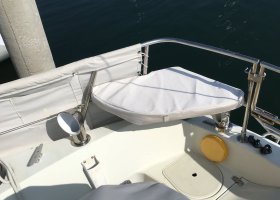As someone on another sailing forum likes to say: "your boat your rules".

We have upgraded the OEM engine compartment exhaust blower system continuously. A mechanic friend with decades of experience told me that these small engines should have a means to remove ambient heat, and that they were designed to be cooled by mainly the block coolant to about the 95% point, and the last 5% would be by direct radiation. Not a significant amount, but it gets more important as the ambient temperature rises, like on a 90+ degree summer day.
Unrelated but important is that the alternator really hates excessive heat and is mounted at the upper part or top of the compartment. Further insult to injury, as it were, is that a sailboat engine compartment is usually really small.
Seems logical to me, since almost all of these little diesels were designed to live "in the open" in a tractor or as a stationary engine on a skid. (?)
He also advises keeping the block wiped (relatively) clean, as accumulations of dirt/oil film also insulates it. (and makes trouble- shooting a leak a little easier).
So we do have the exhaust blower on whenever the motor is running, and the flexible hose pick-up is at the top of the compartment.
(Totally the opposite as it would be mounted for a gasoline engine, of course.)
As they say on the 'net: YMMV.


